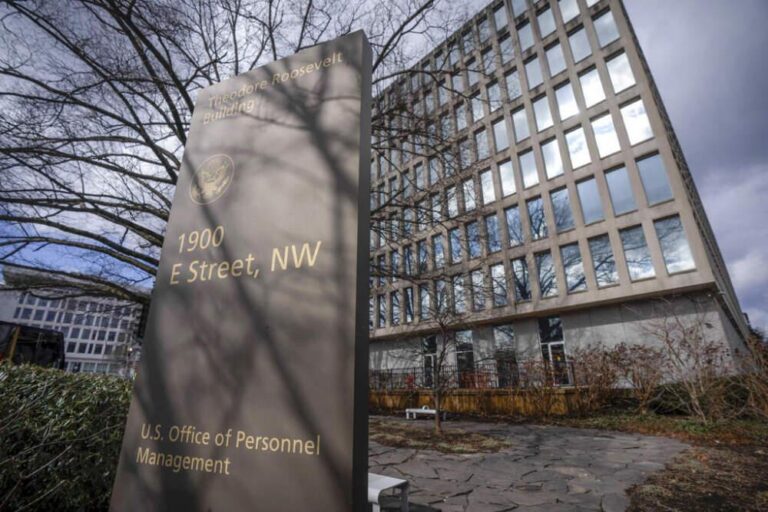Exploring the Nationwide Presence of Federal Employees: Beyond Washington, D.C.
Federal Employees Spread Across the Country
Contrary to the widespread assumption that most federal employees are concentrated in Washington, D.C., recent data indicates a far more dispersed workforce. Federal personnel are increasingly embedded in communities nationwide, reflecting a strategic shift toward decentralization. This trend highlights the federal government’s efforts to leverage regional strengths and diversify its talent base beyond the capital.
Key states with substantial federal employee populations include:
- Virginia: Hosting major defense and technology agencies, including offices in Arlington and Fairfax.
- Maryland: A hub for health, intelligence, and scientific research agencies such as the National Institutes of Health (NIH) and the National Security Agency (NSA).
- Texas: Home to extensive military installations and border security agencies, playing a critical role in national defense and immigration enforcement.
| State | Estimated Federal Workforce | Dominant Agencies |
|---|---|---|
| Virginia | Over 150,000 | Defense, Homeland Security, Technology |
| Maryland | More than 120,000 | Health, Intelligence, Research |
| Texas | Approximately 75,000 | Military, Border Security, Veterans Affairs |
Key Regional Centers Powering Federal Operations
Beyond the traditional federal hubs, cities like Atlanta, Denver, and San Francisco have become vital centers for government activity. These metropolitan areas host thousands of federal employees who manage critical functions ranging from public health to environmental protection and national security. This geographic diversification not only enhances operational responsiveness but also reduces the strain on Washington’s infrastructure.
These regional hubs contribute significantly to their local economies and foster closer ties between federal agencies and the communities they serve. Highlights include:
- Economic stimulation: Federal jobs generate substantial local spending and support ancillary businesses.
- Sector specialization: Each hub focuses on specific government functions, such as healthcare in Atlanta or environmental management in Denver.
- Community engagement: Federal workers often participate in local initiatives, strengthening civic partnerships.
| City | Primary Federal Agencies | Federal Workforce Size |
|---|---|---|
| Atlanta, GA | Centers for Disease Control and Prevention (CDC), Social Security Administration | 18,000+ |
| Denver, CO | Environmental Protection Agency (EPA), U.S. Geological Survey | 10,000+ |
| San Francisco, CA | National Park Service, Veterans Affairs | 12,000+ |
Economic Influence of Federal Employees in Local Communities
Federal workers serve as a cornerstone for economic vitality in many regions outside the Washington metropolitan area. Their employment supports a wide range of local enterprises, from real estate to retail and service sectors, fostering economic diversification and stability. Cities anchored by large federal installations or agency headquarters often experience sustained growth and enhanced public services.
The broader economic benefits include increased tax revenues, improved educational resources, and enriched cultural institutions. Below is an overview of metropolitan areas with significant federal employment and their estimated economic contributions:
| Metropolitan Area | Federal Employees | Estimated Economic Impact (in Billions USD) | Notable Agencies |
|---|---|---|---|
| Seattle, WA | 22,000 | 3.8 | NASA, Veterans Affairs |
| San Antonio, TX | 15,500 | 2.3 | Military Bases, Internal Revenue Service (IRS) |
| Boston, MA | 19,300 | 4.1 | Department of Health & Human Services, EPA |
| Denver, CO | 13,700 | 1.9 | Department of Energy, U.S. Air Force |
- Federal employment stimulates private sector job creation beyond government roles.
- Consistent federal spending contributes to economic resilience in local markets.
- Presence of diverse agencies encourages innovation and regional expertise development.
Strategies to Enhance a Distributed Federal Workforce
To support the growing trend of a geographically dispersed federal workforce, policymakers should focus on strengthening local infrastructure and expanding digital connectivity. Investments in modernizing regional offices and enhancing broadband access are essential to facilitate seamless collaboration between decentralized teams and central agencies.
Additionally, creating clear career advancement opportunities within regional offices will help maintain employee engagement and retention. Embracing flexible work arrangements, such as telework and hybrid models, can broaden access to federal jobs and promote a more inclusive workforce that mirrors the nation’s diversity.
Encouraging interagency mobility outside Washington, D.C. can also foster skill development and equitable talent distribution. The following table summarizes key policy recommendations aimed at building a resilient and balanced federal employment framework:
- Infrastructure Enhancement: Upgrade regional facilities and expand broadband nationwide.
- Professional Growth: Establish localized training programs and mentorship initiatives.
- Flexible Work Policies: Institutionalize telework and hybrid work options.
- Targeted Recruitment: Focus hiring efforts on underserved rural and suburban communities.
- Employee Mobility: Promote rotations across agencies to diversify skills and balance staffing.
| Policy Focus | Recommended Action | Anticipated Outcome |
|---|---|---|
| Digital Infrastructure | Increase funding for broadband and technology upgrades in regional offices | Improved connectivity and operational efficiency |
| Workplace Flexibility | Expand telework programs and support systems | Enhanced employee satisfaction and retention |
| Career Development | Implement local mentorship and training initiatives | Stronger workforce skills and engagement |
| Recruitment Strategies | Prioritize hiring in economically disadvantaged regions | More diverse and geographically balanced workforce |
Final Thoughts
This comprehensive overview demonstrates that the federal workforce is widely distributed across the United States, far beyond the confines of Washington, D.C. Recognizing the locations and roles of these employees is crucial for understanding the interplay between federal employment, regional economies, and public policy. Ongoing analysis will continue to shed light on how this evolving landscape shapes communities and government operations nationwide.







